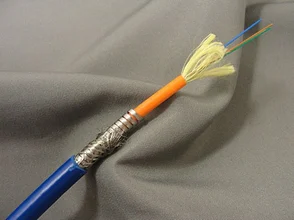Design, functionality, and easy maintenance are key features that wiring harness manufacturers look to when producing wire harnesses. Vital to an immense range of products that relay electrical power or transmit data – from refrigerators, automobiles, and industrial robotics to cell phones, tablets, and telecom assemblies – wire harnesses are essential devices that literally keep us connected to the everyday world in which we live. An extended product lifespan, performance, meeting production requirements, and facilitating installation and maintenance, are all important to manufacturing quality harnesses. Here are three fundamental tips essential to every wiring harness manufacturer’s success:
Use the Right Insulation
 Using the right insulation and shielding is necessary to protect signal and data lines from electromagnetic interference (EMI) common to work environments. EMI affects any electronic circuitry exposed to an electromagnetic (EM) field. Any electronic device then, is susceptible to EMI. An EMI can be created by natural or man-made sources. Lightning or a solar storm would be an example of natural interference; electrical motors, cellular networks of mobile phones, and ignition systems are EMIs caused by man-made sources. Due to the prevalence of EMI, for harness wires to transmit data and signals, cables and wires are insulated and shielded to provide a conductive layer.
Using the right insulation and shielding is necessary to protect signal and data lines from electromagnetic interference (EMI) common to work environments. EMI affects any electronic circuitry exposed to an electromagnetic (EM) field. Any electronic device then, is susceptible to EMI. An EMI can be created by natural or man-made sources. Lightning or a solar storm would be an example of natural interference; electrical motors, cellular networks of mobile phones, and ignition systems are EMIs caused by man-made sources. Due to the prevalence of EMI, for harness wires to transmit data and signals, cables and wires are insulated and shielded to provide a conductive layer.
Shielding effectively acts to reduce electrical noise and its impact on signals and, in doing so, lowers EMI. Just as important, shielding prevents cables near each other from crosstalk, but also protects machinery and people from exposure from EM fields.
There are several forms of shielding – braided, spiral design or metal-coated Mylar, a type of foil shield. Depending on the design and configuration, each type of shielding can mitigate varying degrees of electrical noise by 85% to 100%. Braided shielding is 90% effective, whereas spiral shields offer up to 98%, and Mylar shielding can fully deflect 100% of EMI.
Thoroughly Test Harnesses Before Use
Electrical safety testing is a matter of safety & function and is an important step in the manufacture of wire harnesses. Depending on the application, several different methods of testing can be conducted to ensure the harness functions as designed. The most common electrical test performed is a hipot test for high voltage. Other types of testing include VSWR testing, continuity testing, and resistance testing.
Testing is essential before installing harnesses into a device or equipment. Testing can reveal any incorrectly wired harnesses or find defective wires and cables immediately. Finding mistakes in advance saves on production costs and lost time. It easily identifies any connectivity issues within seconds – finding opens, shorts, incorrect wiring, or intermittent connections. Electrical testing also ensures the highest quality components are manufactured and delivered on time.
Design With the Right Type of Wire for the Use Case
Another important consideration in design and maintenance of wire harnesses is selecting the right type of wire for the application. Whether using a solid or stranded wire for the application will depend on its requirements. Using an incorrect wire could result in product failures, safety concerns, insufficient insulation and shielding, and may well present compliance issues with such regulatory requirements as UL, CSA, or CE.
There are a handful of differences between stranded and solid cables, but the most significant relate to performance, function, and design requirements. Compared to stranded wires, in general, solid cables perform better as electrical conductors, offering superior, stable electrical characteristics that function over a wide range of frequencies. Solid wires are also more durable, can withstand vibration, function in all-weather environments and, due to less surface area, they are less susceptible to corrosion. At terminal points, they hold their shape and seat more effectively within IDCs on jacks, patch panels and connecting blocks.
On the other hand, if a design requires flexibility, stranded cables are a better choice. Stranded wiring, as the name suggests, consists of bundled braids of stranded wire. The design features allow it to withstand the rigors of bending and flexing far better than solid wiring. The latter is less pliable, more rigid, and will break if the application requires any degree of flexing or twisting. Stranded wires are malleable, flexible and do not split or sever when they are twisted. They are best-suited for indoor or enclosed applications like circuit boards, speaker wires, or within car doors—where connecting electronic components require constant flexing and twisting.


